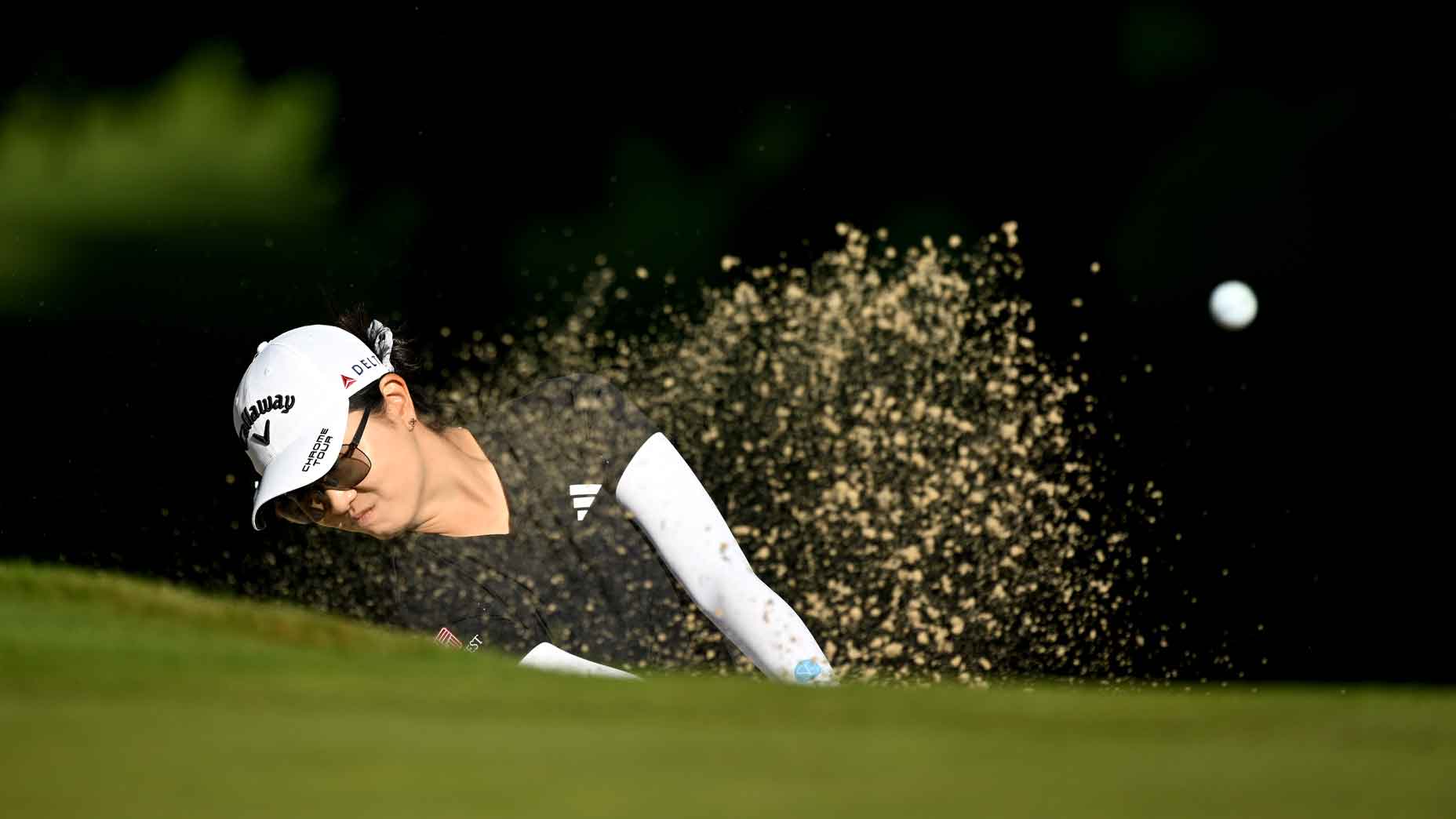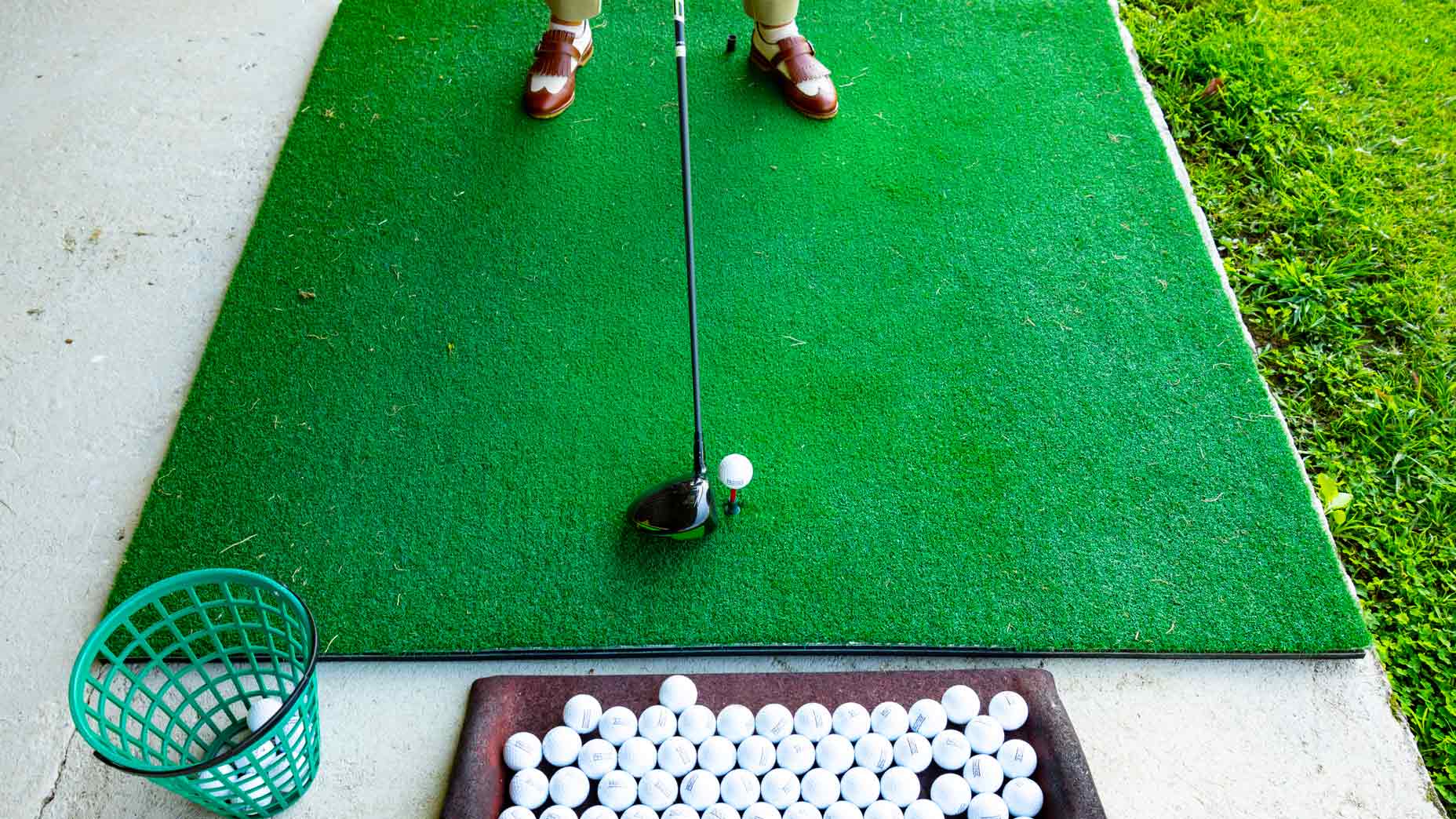Want to see nearly instant improvement on your scorecard? It will come when you learn to make more mid-length putts.
Of course, that’s easier said than done, with mid-length putts often presenting major issues for every player; pros included. We all know that the percentages don’t work in your favor when it comes to sinking 8-to-15 foot putts. But when players starting making more of these, they can help save par, or even help you make a few more birdies.
To see improvement with your mid-length putting, follow the below practice techniques — which should help shave strokes and lower scores.
1. Good technique
Having a good set up and stroke is certainly part of being able to make a lot of putts. Good posture, where your arms hang, and a consistent stroke path are important to being able to consistently roll the ball on the proper line.
One of my favorite training aids is Alignment Ball, which helps set up players the right way, which leads to the eyes over the ball. Then golfers can practice a proper stroke path, watching the putter pass under the string.
2. Aim the putter face properly
Any time you make a putt, it has a lot to do with having your golf ball on the proper line. An absolutely necessary skill is to be able to aim your putter face properly, and this requires a bit of attention and practice time.
There are plenty of training aids out there to help you to do this, but you need to get out there and practice aiming the face the right way, looking to your target to train your eyes.
3. Great distance control
In a perfect world, your golf ball will be slowing down around the hole, allowing it to fall into the edge of the cup. Then again, we don’t live in a perfect world on the golf course — but that’s part of what makes the game fun.
Working on your distance control will help get the above feeling more frequently.
To accomplish distance control, adjust your backstroke length based on the desired length to the hole. Practice adjusting your backstroke length for different distances, which will allow you to be smooth and equal throughout your stroke.
On smaller strokes, swing slower. On larger strokes, swing faster.
You want just one variable controlling distance, and this can be accomplished through your backstroke length.
4. Green reading is a necessary skill
Reading greens takes years of work. Even when you play a course hundreds of times, it’s still difficult to master the read, as pin locations change and other factors come into play — like weather and the cut of the green, among others.
But to make more mid-length putts, you must be great at reading greens.
To make improvements in this area, I suggest you stand back and survey the area to see the predominant tilt. All greens are built to drain well when it rains, so look for areas where the water would tend to flow — as this will give you a good idea in the general break. Remember, faster greens will break more, and slower one will break less.
One tool to help with green-reading is GolfLogix green books, which offers tour-quality green data, and can provide the exact break on most of your favorite courses.
5. Your line and speed much match
Success with mid-length putts require both your chosen line and the ball speed to match.
For example, if you choose to play a greater break, you must roll the ball slower — so the tilt can affect the curvature. If you play less break, your ball must be rolling a bit faster in order to hold the line with less curve due to the greater speed.
6. Learn how to make shorter putts first
Putting takes lots of practice. To see improvement, it takes even more practice than many players typically spend on the short game.
To start making more mid-length putts, focus on becoming more proficient at putts in the 3-, 4-, and 5-foot range. Once you get good at these shorter distances, you’ll build up your confidence and start seeing a better touch on longer putts.
7. Roll the ball
Rolling the ball well on the green may sound basic, but, when it comes off the face of the putter rolling end-over-end, you’re more likely to see it glide across the green towards your target.
Rather than trying to force the ball to go in, rolling the ball the right way will lead to better results and more makes on the green — so make this a passive goal for yourself.
8. How uphill and downhill lies impact the break
All breaks on the green are not created equal.
On downhill putts, you’ll have to play more of a break because the ball will roll slower. On the contrary, the opposite happens when you’re putting uphill, so be sure to decrease the break.
It may be simple, and feel like a minor tip, but even this adjustment can help you make more mid-length putts.
9. Stay still
Good technique will make-or-break a golfer’s putting success.
If you watch some of the best putters in the world, they keep their bodies steady, meaning they don’t shift their weight or have any excessive motion. This provides a stable base and overall body movement through the swing.
10. Practice on a line
Always give yourself feedback when you’re practicing on the putting green. Not only will this help with what you’re doing wrong (or right!), but it allows you to get the necessary repetition with your stroke.
If there isn’t someone around to help (like a teacher), get a training aid to help aim your putter face the right way, check your set up, and see that you’re rolling the ball end-over-end, down your aim line.
While going to the range to warm up is fun — and what most of us tend to do — take some extra time on the putting surface to focus on your mid-length putts. This is a more direct path to lowering scores, as a stronger short game can cover up bad tee or approach shots.
With good technique and a practice plan, you’ll drop more of these mid-length putts.
Latest In Instruction

Golf.com









